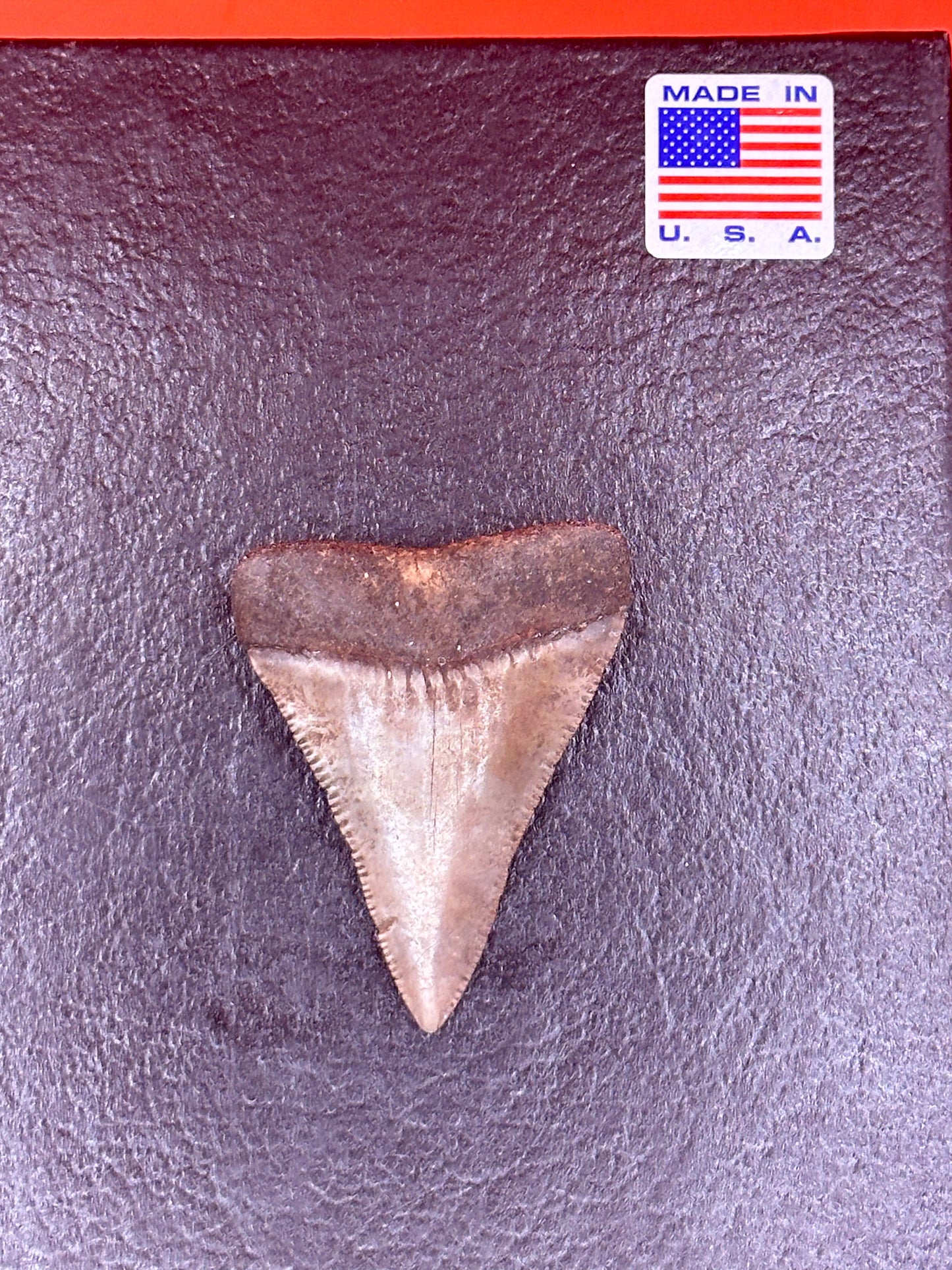Blackbeards Collections
2.05” St. Marys Great White
2.05” St. Marys Great White
Couldn't load pickup availability
St. Marys GW 2.05” long x 1.54” W
The St. Marys River, which forms part of the border between Florida and Georgia, is another notable site for finding fossilized shark teeth, including those from the great white shark (*Carcharodon carcharias*). This area, like many other fossil-rich locations along the southeastern United States, was once submerged under ancient seas, creating an environment conducive to the fossilization of marine life remains.
### Characteristics of Great White Shark Teeth from St. Marys River:
1. **Size and Shape**: The great white shark teeth found in the St. Marys River typically range in size from 1 to 3 inches, though larger specimens can occasionally be found. These teeth are triangular, with a broad base tapering to a sharp point, and often exhibit serrated edges, which were used by the shark to cut through prey.
2. **Color**: Fossilized teeth from this region can vary in color depending on the minerals present in the surrounding sediment. Common colors include shades of black, gray, tan, and brown. The darker teeth are often more highly sought after by collectors.
3. **Age**: The great white shark teeth found in the St. Marys River are generally from the Miocene to Pliocene epochs, dating back approximately 2.6 to 23 million years. These periods were prime times for large marine predators, making the region rich in shark fossils.
4. **Rarity**: While not as large or rare as the teeth from the extinct megalodon, great white shark teeth are still highly prized by collectors, particularly those in good condition with sharp serrations and a complete root.
### Collecting in the St. Marys River:
- **Accessibility**: Fossil hunting in the St. Marys River is usually done by boat, as many of the best spots are located along the riverbanks and in submerged riverbeds. The river’s shifting sands and currents can expose new fossil deposits over time, making it a dynamic environment for fossil hunters.
- **Techniques**: Collectors often use tools like shovels and sieves to sift through the river's sand and gravel, looking for teeth and other fossils. Visibility can sometimes be a challenge due to the murky water, so patience and persistence are key.
- **Regulations**: It’s important to be aware of local regulations regarding fossil collecting. Some areas might require permits, and it's essential to ensure that any collection is done legally and sustainably.
The great white shark teeth from the St. Marys River offer a fascinating glimpse into the region's prehistoric marine life and are cherished both for their beauty and historical significance.
Materials
Materials
Shipping & Returns
Shipping & Returns
Dimensions
Dimensions
Care Instructions
Care Instructions



Image with text
Pair text with an image to focus on your chosen product, collection, or blog post. Add details on availability, style, or even provide a review.
-
Free Shipping
Pair text with an image to focus on your chosen product, collection, or blog post. Add details on availability, style, or even provide a review.
-
Hassle-Free Exchanges
Pair text with an image to focus on your chosen product, collection, or blog post. Add details on availability, style, or even provide a review.


